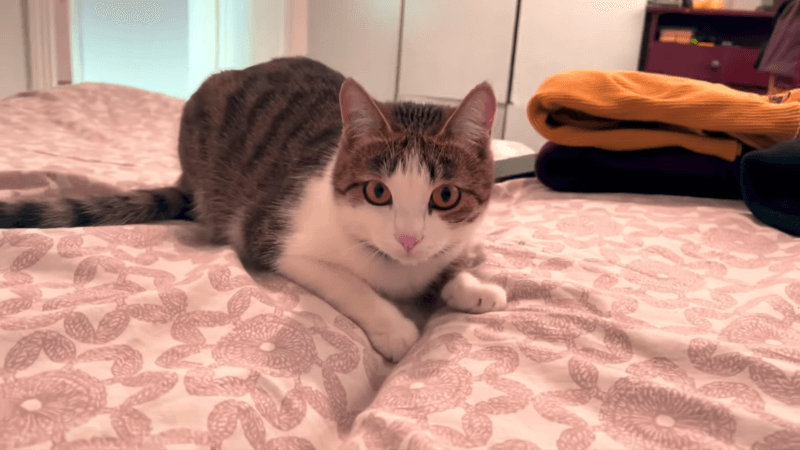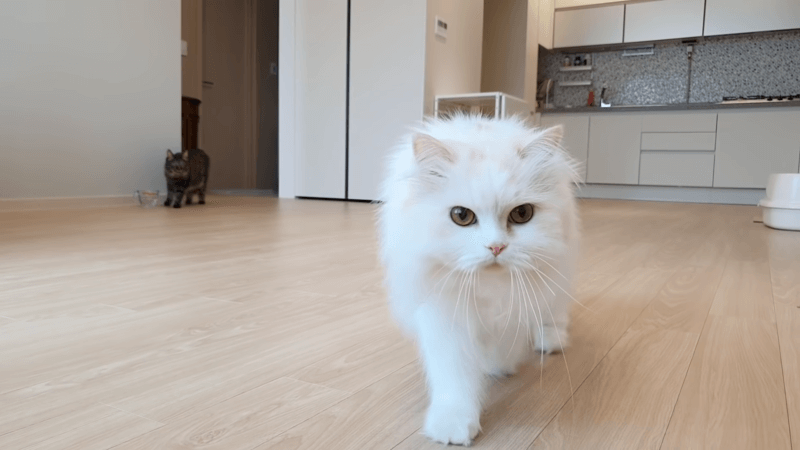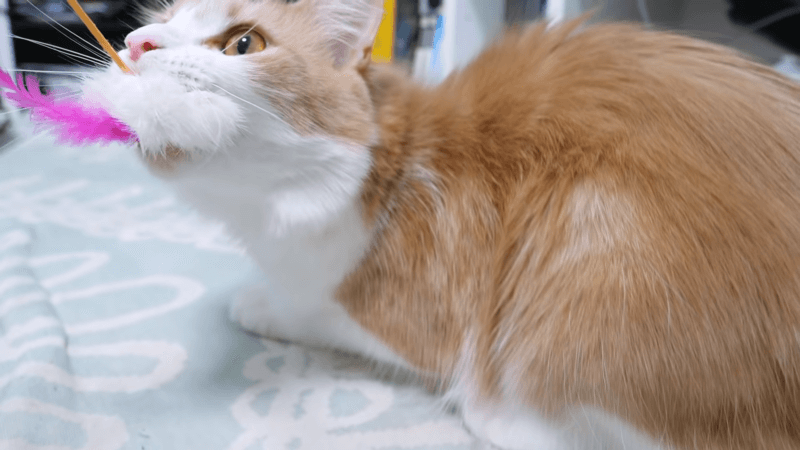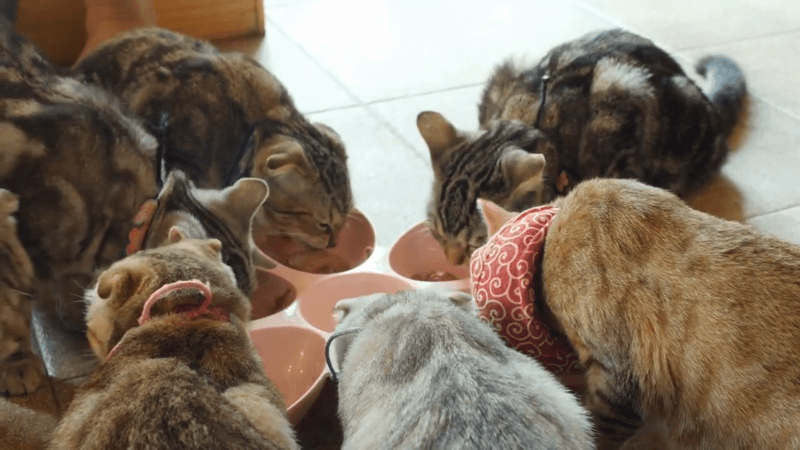No products in the cart.
When it comes to managing seizures in our beloved feline friends, one of the most common questions that arises is, “How much CBD oil do I give a cat for seizures?” Managing seizures involves a careful balance of factors like CBD dosage, understanding its potential benefits, and delving into the underlying causes of these seizures. In this blog, we will discover, how much CBD oil do i give a cat for seizures, what causes seizures in cats, and why do cats have seizures.
How Much CBD Oil Do I Give a Cat for Seizures?
The right amount of CBD oil to give your cat when they have seizures can vary. Think of it like customizing a recipe – you need to consider factors like your cat’s weight, how severe the seizures are, and the strength of the CBD oil.
Now, here’s a general tip many cat owners find helpful: starting with about 0.5 to 2 milligrams of CBD for each pound of your cat’s body weight per day can be a good starting point. But remember, this is just a starting point. Your vet, who knows your cat’s unique needs, might suggest a different dose.

What Is CBD for Cat Seizures?
CBD for cat seizures is a bit like a friendly, natural helper found in cannabis plants, which come in different varieties like hemp and marijuana. It’s part of a larger group of compounds called cannabinoids. Now, here’s the cool part: Unlike THC, which can make you feel all spacey and high, CBD is more like a chill companion. It doesn’t give your cat that “high” feeling.
How CBD May Help With Cat Convulsions
- While the exact mechanisms are still being studied, CBD has shown promise in managing seizures in cats and other animals. Some potential ways in which CBD may help with cat seizures include.
- Interaction with the Endocannabinoid System: CBD is like having a friendly chat with your cat’s internal manager, the endocannabinoid system. It helps keep the nervous system running smoothly.
- Potential Anti-Seizure Properties: CBD is a bit like a superhero on a mission to reduce seizures. It might have the power to make them less frequent and intense, which is pretty amazing.
- Reducing Inflammation: Think of CBD as a gentle, calming presence for your cat’s brain. It can soothe inflammation, like calming a storm, making the brain less likely to have seizures.
- Calming Effects: When it comes to dealing with stress and anxiety, CBD is like a warm, comforting hug. It helps your cat stay calm during and after seizures, making the whole experience less distressing.
Potential Side Effects of CBD
CBD is generally considered safe for cats, but there can be side effects and precautions to keep in mind.
- Drowsiness: Some cats may experience mild drowsiness when given the best CBD for cats. Monitor your cat’s behavior, especially after the initial doses, and ensure they are not overly sedated.
- Dry Mouth: CBD can cause dry mouth (increased thirst) in some cats. Provide plenty of fresh water to prevent dehydration.
- Interaction with Medications: CBD can interact with certain medications your cat may be taking. Inform your veterinarian about any ongoing treatments to ensure there are no adverse interactions.
- Quality and Purity: Use high-quality CBD products specifically designed for pets. Avoid giving your cat products intended for humans, as they may contain ingredients harmful to cats.
- Regular Monitoring: Continuously monitor your cat’s response to CBD, including seizure frequency and any changes in behavior or health. Adjust the dosage or consult your veterinarian if needed.
What Causes Seizures in Cats?
Seizures in cats can be caused by a variety of factors, including.
- Epilepsy: For cats, epilepsy is a bit like a glitch in their brain’s wiring. It can happen due to genetics or if something’s not quite right in their noggin.
- Infections: Cats can also get brain trouble from infections like FIP, toxoplasmosis, or viral encephalitis. These infections sneak into their brains and cause seizures.
- Metabolic Disorders: Conditions like low blood sugar, liver problems, or kidney issues can throw a cat’s brain off balance and lead to seizures.
- Brain Tumors: Imagine a lump or growth in your cat’s brain, pressing all the wrong buttons. Brain tumors can be the reason behind seizures, which are a sign that something’s amiss.
- Toxic Substances: Cats are natural explorers, but sometimes, their curiosity can lead to problems. Things like eating toxic plants, chemicals like antifreeze, or even ingesting lead can trigger seizures.
- Trauma: Just like humans, cats can get hurt. Head injuries or brain trauma can make a cat’s brain act up and result in seizures.

Symptoms of Cat Seizures
Cat seizures can manifest in various ways, but they typically exhibit the following common signs:
- Sudden Loss of Consciousness: During a seizure, a cat may abruptly lose consciousness, causing it to collapse or fall over unexpectedly.
- Muscle Twitching: Involuntary muscle contractions or twitching are often observed, typically starting in the cat’s facial muscles.
- Rigidity: The cat’s body may become stiff or tense, making it appear rigid.
- Convulsions: Full-body convulsions can occur, with the cat’s legs and body jerking or paddling involuntarily.
- Salivation and Drooling: Many cats experience excessive drooling or even foaming at the mouth during a seizure.
- Vocalization: Some cats may vocalize loudly while having a seizure, which can be distressing to witness.
- Incontinence: Cats may lose control of their bladder or bowel functions during a seizure.
- Altered Behavior: It’s not uncommon for cats to exhibit disorientation or unusual behavior shortly before and after a seizure, which may include restlessness or confusion.
Impact of Seizures on a Cat’s Health
The impact of seizures on a cat’s health can be profound and varies depending on factors like seizure frequency, duration, and underlying causes. Here’s an overview of how seizures affect a cat’s well-being:
- Physical Health: Seizures can be physically exhausting for cats, causing muscle contractions, twitching, convulsions, and loss of bodily control, such as urination or defecation. These physical manifestations leave cats feeling drained and disoriented.
- Injury Risk: Seizures pose a risk of injury to cats. During seizures, cats may thrash about or collide with objects, potentially resulting in injuries like bruises, cuts, or broken teeth.
- Postictal State: Following a seizure, cats often enter a postictal state marked by disorientation, confusion, and weakness. This phase can lead to altered behavior, restlessness, aimless wandering, or temporary blindness, lasting from minutes to hours.
- Psychological Impact: Frequent seizures can impact a cat’s psychological well-being. Cats may become anxious, stressed, or fearful due to the unpredictability of seizures, leading to gradual behavioral changes.
- Secondary Health Issues: Seizures may signal underlying health problems like brain tumors, infections, or metabolic disorders. Addressing these root causes is essential to prevent further seizures and manage associated health issues.
- Medication Side Effects: Cats prescribed anticonvulsant medications may experience side effects such as lethargy, increased thirst, appetite changes, or liver-related concerns. Monitoring for these side effects and medication adjustments are crucial.
Why Do Cats Have Seizures?
Seizures in cats occur when there is abnormal electrical activity in the brain, leading to sudden, uncontrolled bursts of muscle activity and altered consciousness. These seizures can be caused by various factors, including medical conditions, genetic factors, and environmental factors.

Environmental Factors
Environmental factors can disrupt a cat’s balance, potentially leading to seizures. These factors include:
- Toxins: Cats are curious creatures, and sometimes their curiosity leads them to ingest or come into contact with toxic stuff like plants, chemicals, or medications. These encounters can set off seizures.
- Heatstroke: Cats aren’t big fans of hot weather, and extreme heat can cause their body temperature to skyrocket. This sudden heatwave can potentially lead to seizures.
- Stress: Just like us, cats can feel the pressure. If they experience high levels of stress due to changes in their environment or other emotional factors, it might trigger seizures in some of them.
- Environmental Changes: Cats love their routines, so when something disrupts their surroundings, it can make them pretty stressful. This stress might make some cats more prone to seizures.
- Light Sensitivity: Imagine rapidly flashing lights like disco lights or strobe lights. For some cats, these can be a trigger for their seizures, especially if they have photosensitive epilepsy.
- Infections and illnesses: Certain infections or diseases that mess with the brain, such as FIP or viral encephalitis, can increase the chances of seizures in cats.
Genetics Play a Role in a Cat’s Seizures
Certainly, genetics can indeed be a contributing factor in a cat’s susceptibility to seizures. While the precise genetic mechanisms behind seizures in cats are not entirely clear, there is evidence suggesting that specific breeds may have a higher likelihood of experiencing certain types of seizures or epilepsy.
For instance, breeds like the Burmese and the Siamese have shown a genetic predisposition to certain neurological conditions, including seizures. These predispositions may be linked to inherited traits that make these breeds more susceptible to neurological issues.
Conclusion
How much CBD oil do I give a cat for seizures? This is a common question among pet owners who are exploring potential treatments for their feline companions. Managing seizures in cats requires careful consideration of factors like CBD dosage, potential benefits, and the underlying causes of seizures. However, it’s crucial to use high-quality products and consult with a veterinarian for proper guidance and monitoring. Ensuring your cat’s health and well-being remains the ultimate goal in this journey.
I am Nelson Cooper, I pursue my passion for writing and my belief is that cats love humans. I enjoy traveling and have a deep appreciation for the beauty of nature, as well as a soft spot for animals, particularly cats.



